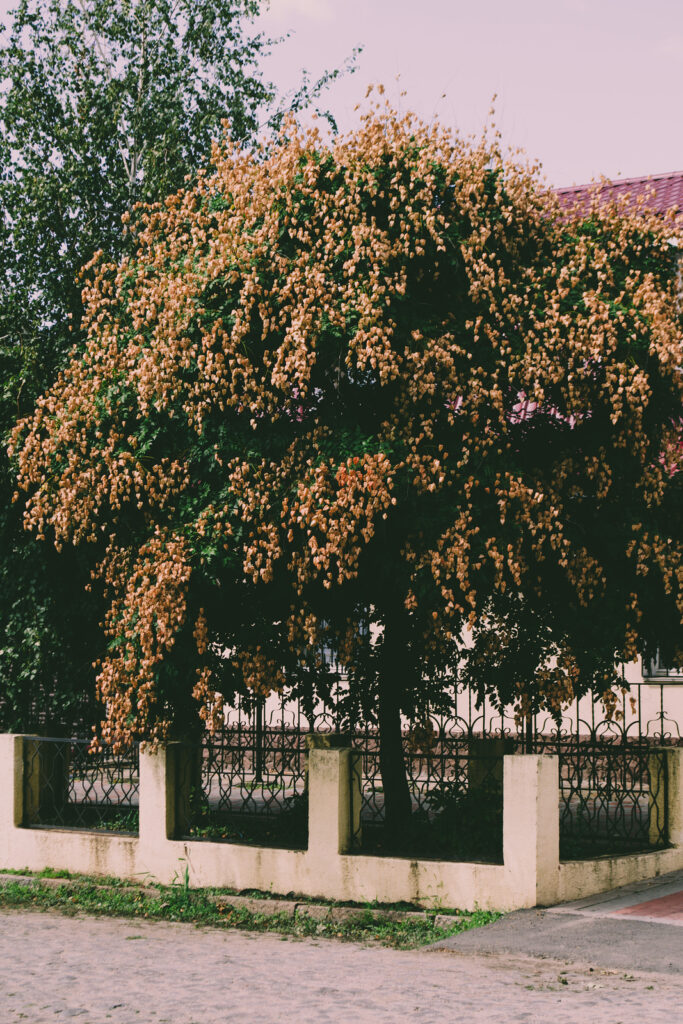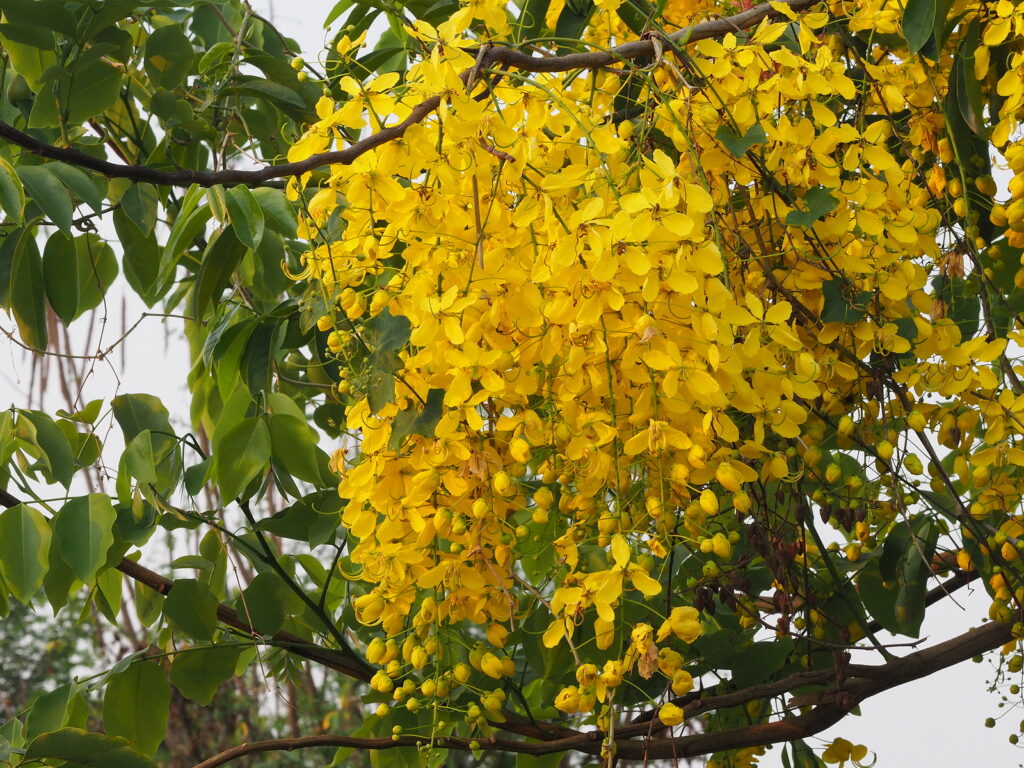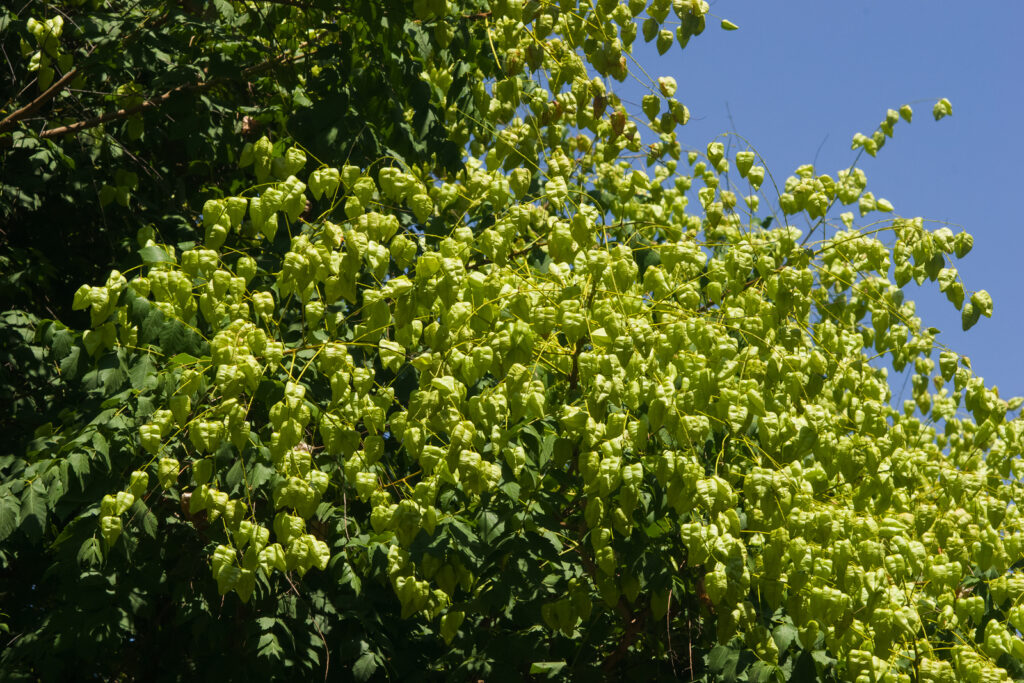Golden-rain tree, Koelreuteria, is a deciduous tree that grows to 30 feet tall. It bears compound leaves and large clusters of showy, star-like yellow flowers. Seedpods follow the flowers; they ripen from green to pinkish-tan in fall and resemble Japanese lanterns.
Golden-rain tree has a rather compact rounded head. The leaves emerge with a pinkish or reddish-purple tinge and become bright green in sum changing to shades of orange, gold, and yellow in autumn.
Golden-rain tree makes a good shade tree for lawn or patio or a good street tree. It is resistant to drought and it grows well near the ocean.
Golden-rain tree can be propagated by seeds planted in autumn or by root cuttings.

Get to know Golden-Rain Tree
- Plant type: Deciduous tree
- Growing Zones and range: Zones 5-9
- Hardiness: Hardy; heat tolerant
- Height and spread: Grows to 50 feet (15m) tall and 40 feet (12m) wide
- Foliage: Compound leaves turn bright yellow in fall
- Flowers: Showy rich yellow flower borne in dense, terminal racemes; followed by bladder-like greenish pods
- Bloom time: Midsummer
- Uses: Specimen tree for mid-summer color
- Common name: Golden-Rain Tree
- Botanical name: Koelreuteria paniculata and species
- Family: Sapindaceae
- Origin: Asia

Where to plant Golden-Rain Tree
- Grow golden-rain tree in full sun; flowers poorly or not at all in shade
- Plant golden-rain tree in humus-rich, well-drained soil; will grow in a variety of soils
When to plant Golden-Rain Tree
- Transplant container-grown or balled-and-burlapped golden-rain trees in fall or spring.
Planting and spacing Golden-Rain Tree
- Space golden-rain trees 30 to 40 feet apart; the tree grows 30 to 40 feet tall and wide.

How to water and feed Golden-Rain Tree
- Keep the soil evenly moist for best growth; golden-rain tree tolerates drought, heat, road salt, and urban conditions.
- Fertilize with aged compost spread to the dripline at least once a year.
Golden-Rain Tree care
- No pruning is necessary unless you want to shape the tree; then prune in winter.
Golden-Rain Tree common problems
- Golden-rain tree flowers poorly or not at all in shade.
- Dieback, canker, mushroom root rot, and wilt sometimes occur.
Golden-Rain Tree propagation
- Sow seed in fall and grow on in a cold frame.
- Take root cutting in late winter.
Golden-Rain Tree varieties to grow
- Koelreuteria bipinnatan (K. integrifoliola), Chinese flame tree: Grows 20 to 40 feet (6-12m) tall and as wide; leaves are 1 to 2 feet long divided into man oval leaflets; flower clusters in late summer similar to K. paniculata.
- K. elegans (K. formosana), flamegold: Grows to 30 feet (12m) tall, round-headed; fall flowers are followed by pinkish capsules.
- K. paniculata, goldenchain tree: Grows to 35 feet (10m) tall and just as wide; open branching; toothed or lobed leaflets; new leaves are purplish, turning bright green in summer then yellow to gold in autumn showy flower clusters to 14 inches long in early to midsummer; flowers are followed by fed to brown capsules. Cultivars include: ‘Apiculata’ has finely divided leaves; ‘Fastigiata’ has a narrow columnar habit; ‘September’ is late-blooming with large flower clusters; ‘Rose Lantern’ blooms late and has rose-pink seedpods.



